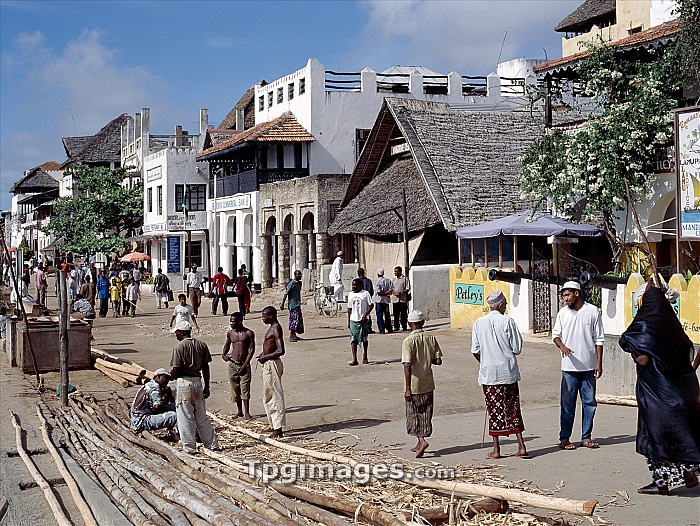
A typical bustling scene along the waterfront of Lamu Island. The majority of people on the island practice a fairly relaxed form of Islam, hence the black clothes and face veils of women and the white khanzus or coloured kikois and embroidered hats of the men. Situated 150 miles north-northeast of Mombasa, Lamu town dates from the 15th century AD. The island's importance lies in the fact that it has the only certain source of sweet groundwater in the entire district. The town was declared a World Heritage Site by UNESCO in 2001 because it is the oldest and best preserved Swahili settlement in East Africa. Moreover, its architecture and urban development graphically demonstrates the diverse cultural influences that came together over many centuries to produce a distinctively local Swahili style and culture. Most of the storied buildings are built of coral and lime, and often have roofs of dried palms, called makuti. The sea wall was built by prisoners of war during the First World War and created the widest street in the island. The men in the foreground are preparing masts for the local sailing ships of the region, called mashua, but colloquially known to visitors as dhows.
| px | px | dpi | = | cm | x | cm | = | MB |
Details
Creative#:
TOP06633503
Source:
達志影像
Authorization Type:
RM
Release Information:
須由TPG 完整授權
Model Release:
NO
Property Release:
NO
Right to Privacy:
No
Same folder images:

 Loading
Loading